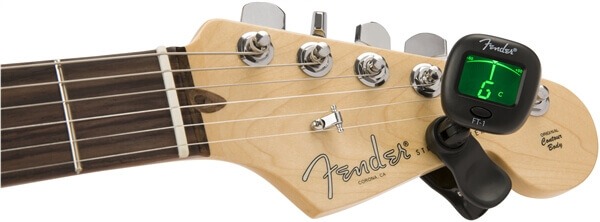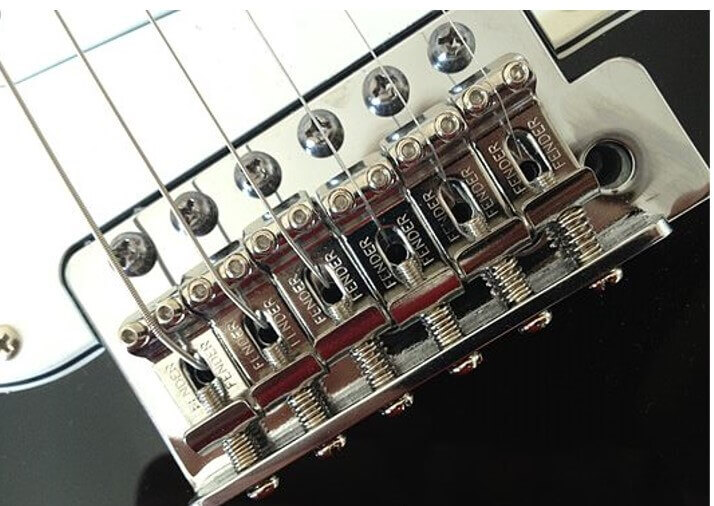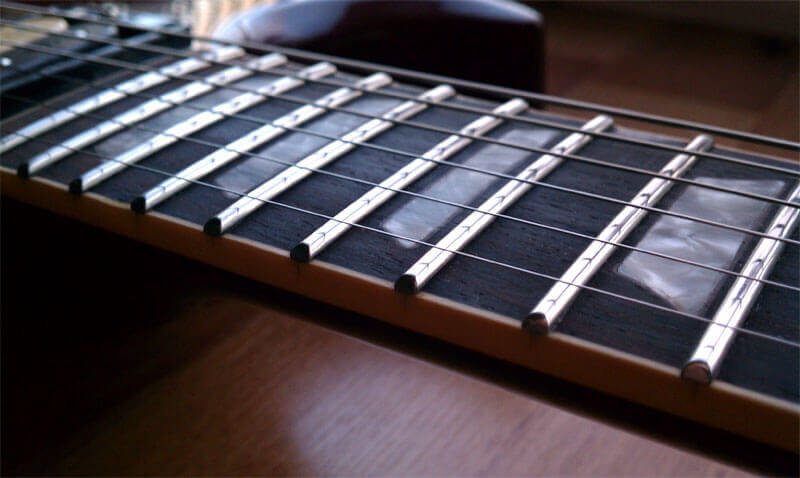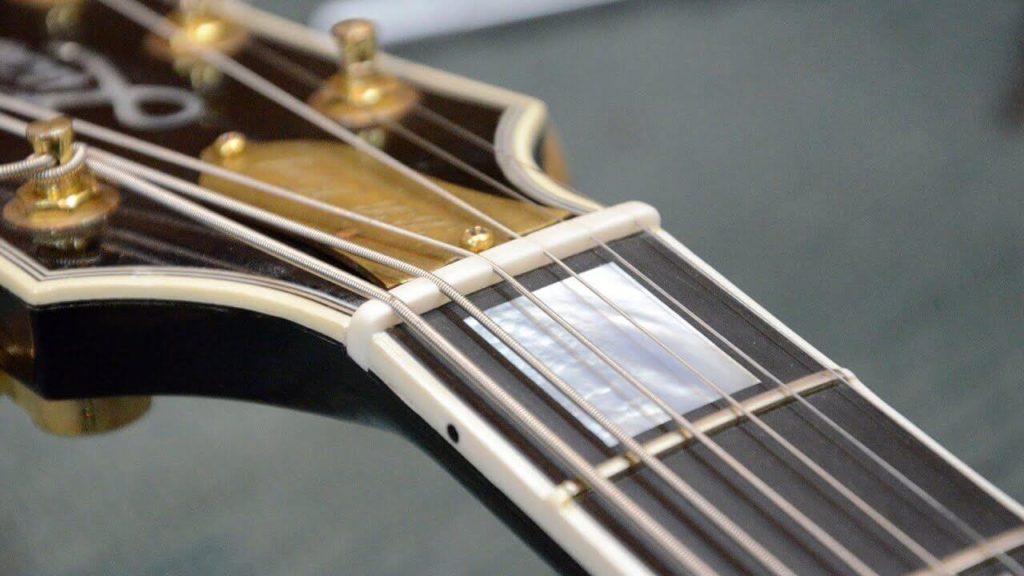Guide: The secrets to keeping your guitar and bass in tune

The guide with all the secrets to keeping your instrument in tune, these are valid for electric, acoustic, classical guitar or bass.
Staying and Playing in Tune
There are many things that will allow us to learn, grow and develop faster and healthier as musicians. Everything that inspires us to play for longer periods of time and that makes us play new and different things will make a difference in our studio, generating a virtuous circle. For that to happen, without a doubt, a fundamental condition is that our guitar or bass remains in tune. For harmonious and inspiring guitar or bass sound, audio and tone.
Who has never had trouble keeping the tuning on a guitar or bass? We all know that this is a frustrating, annoying and infuriating situation like few others, let alone if it happens to us in the middle of a song during rehearsal, or worse, on stage playing a recital.
For that reason, it is essential that you learn the secrets and tricks to keep your instrument in tune. Here we show you the guide so that you master the tuning of your instruments and can develop your art.
How to tune the electric guitar?
Tuning your instrument seems simple, you can do it by ear, but today with a “clip” type tuner or free online chromatic tuners for electric guitar and bass, like the Tuna that you can use on your cell phone, it is easier than ever. Whether you use standard tuning in E-tuning 440-, drop D or other guitar or bass tunings. No need to plug in or activate a tuner pedal.
Simple and easy guitar tuning even for beginners. You turn the pegs to one side or the other as you need to tighten or loosen until the tuner shows that each string is in tune. Sounds simple, doesn’t it? But no, this is really the last step of a whole process that you have to do beforehand.

What are the types of tuner?
Tuners can be classified in several ways.
Tuners are essencial to keep your guitar or bass in tune, and can be grouped in various ways. Because of its format, its functionality, its quality, its price, etc. In online stores you can find a tuner with a price for every budget.
The first grouping of tuners is by format:
- Tuner Pedal: they are practical and precise, they also serve to block the sound as well.
- Standard tuner: it is a device to which you have to plug the guitar. They are the first tuner format there was, it is less practical, but they are reliable.
- Clip-type tuner: this type of tuner locks onto the guitar’s headstock and tunes by vibration. They are very practical guitar tuners, but for home use, as they can pick up strong external sounds or vibrations, such as those that can be found in a rehearsal room or recitals.
- Plugin or program type online tuner: they are practical tuners that you can load on your cell phone or computer, you can tune by the onboard mic or by plugging them in. In general, this type of tuner does not have a high precision.
- Tuner built into a device like an amplifier: Built-in tuners are practical, but are generally of limited precision and functionality.

The second classification is by functionality of the tuner:
- Standard tuner: you can only tune in the standard 440 tuning. Usually
- Chromatic tuner: you can tune in the 12 notes, allowing any type of tuning, even the most extreme, as well as allowing you to tune not only guitar or bass but any other type of instrument.
Is your guitar calibrated, fifth or octave?
That your instrument, be it electric guitar or electric bass, is fifth or octave means that the distance between the nut and the twelfth fret is the same as the distance between the twelfth fret and the bridge. Or, put another way, it means that if you play the string at the 12th fret, you get the same note one octave higher than if you play it open. You can also do it by playing the harmonic of the twelve fret, in that case, it must be the same note as the string played in the open.
How to calibrate, fifth or octave your electric guitar or electric bass
To fifth you must regulate the distance between the nut and the bridge from the bridge by regulating the place of the saddles. Adjusting each saddle in one direction or another, if the harmonic gives a note is higher than the air, the saddle should be moved away from the nut, on the other hand if the harmonic is lower, you should bring it closer to the bridge. That is, if the note is lower, it means that the distance is longer from the twelve fret to the nut, so you must bring the saddle closer to the bridge to reduce said distance and therefore the difference and vice versa if it is higher .
At Guitarriego we recommend performing the fifth or octave process by stepping on the string at the twelve fret, in order to compensate for the effect of the action. That is why it is important to also take care of the action of your electric guitar or electric bass. If your action is a bit high, it can happen that the air and the harmonic of the twelve fret sound in tune, however, when you step on the note at the twelve fret you will find that it is slightly off. Conversely, of course, fifth or octave fingering the string can result in the harmonic being slightly offset. Without a doubt, one plays much more by stepping on the string than by using harmonics, for which we consider that it is best to work with low actions and adjust by fingering the note.

Importance of the strings
All this process must be done with a new stringing. Since with use, electric guitar strings lose mass and regularity, therefore, the difference in note can be caused by an imperfect string, either by use or by factory failure.
Also, in case of changing the string gauge of electric guitar or electric bass, it will be necessary to calibrate the guitar or bass, of course, and carry out this process again. Since the thickness -gauge- of the string, plays in the distances and will affect the intonation as well as the general setting of the instrument.
Unevenly worn frets can also affect intonation. If that is the case, the arrangement requires a specialized hand. Take it to your trusted luthier.
Once your electric guitar or electric bass is fifth or octave, it is ready to be tuned correctly.
Keeping your guitar and bass in tune
Once you tune your bass or guitar, you want it to stay that way, in tune. There are several factors that will help or make it difficult for us to achieve this. The facilitators are fixed bridges, locking systems such as those used with Floyd Rose bridges, among others. On the contrary, floating bridges and their excessive use will make it difficult for us to keep the instrument in tune. This is because the string tension is changed and not only can cause the string to stretch – when new – but can also cause the part of the string wrapped around the peg to not stay the same when the tension is released.
That is why when you change the strings to the guitar or bass, you must: stretch them as many times as necessary until you see that the new strings are settled, that is, they stop loosening -stretch-.
When you place the strings, they should not turn too many times on the peg, in this way you reduce the risk that the “winding” will move due to changes in tension caused by lever or stretching. One to three laps will be fine.
Finally, tune by adjusting and not loosening, in this way you will avoid that, if the string got stuck somewhere, with the first stretch or “lever” it unlocks and becomes loose and therefore out of tune.

Playing the guitar or bass in tune
The design of the guitar and bass is imperfect in terms of tuning. You may have already read the terms “non-tempered guitar” or “tempered guitar.” They are terms related to imperfections and tuning techniques and correction techniques. But beware, everything has its “pros” and “cons”. But we will see that in another article. Let’s continue with our theme of keeping in tune with our instruments, as they are, imperfect.
Keep your guitar or bass in tune is in your fingers
While you can compensate your tuning to sound more or less palatable, experienced players have also learned to press and stretch the strings to achieve perfect tuning.
Bill Frisell developed a habit of using Delay to create a kind of Chorus effect largely to mask the dissonance of a guitar’s inherent tuning flaws.
Has it ever happened to you that you feel that something does not sound in tune, and when you go to check the tuning everything is in its place?
This may be or because your playing is going out of tune, for example, pressing the strings too hard, which sounds louder due to greater tension. Or on the contrary, it may be that your skill is not high enough to correct the imperfections of the guitar.
High frets can also be another problem. Since they can make your mango work as if it was scalloped. That way, pressing too hard will cause the tone to change due to too much tension. Thus, when you play a chord, some fingers may press harder than others, causing certain notes to be out of tune.

Other factors that affect the tuning of the guitar
If, having considered all of the above, you still can’t sound in tune or keep in tune. As we explained before, it can be a problem of a factory faulty rope. It is not common, but it can happen. To verify if this is the problem, you can try to play all the strings except one, until you find the problem. Try changing that string. If you still have problems, it could be a saddle or nut failure. Bad support can generate annoying vibrations and even detuning. It is easy to identify if it is the capo or not, since in that case the problem is only when playing the string in the air. In case that is the fault, we recommend that you take the guitar to your trusted luthier.
The tuning moves as if they were new guitar strings
Has it ever happened to you that you have settled strings, not old, for example, a string that has a couple of hours of use, but continues to go out of tune as if it were new?
The reason for this may be that the capo channels are not working properly. The rope does not run well, therefore, before a bending -stretched- the rope does not return to the previous place. This can be easily corrected by sanding lightly with the rope. You can also use graphite – pencil lead – as a lubricator so that the string runs well and returns to its place and maintains the same tension on both sides of the nut.

Overtones on electric guitars
It may happen that, on the sixth string, from the seventh fret up, or even earlier, you start to feel an annoying overtone. This may be due to the fact that the electromagnetic field generated by the guitar pickups surely from the neck – is affecting the correct vibration of the string. This is common in singlecoils with strong magnets. In this case, you should lower the height of the guitar’s pickups, in order to move it away from the string.
Out of tune guitars
Last but not least, actually. You have to know that there are some guitars that will never sound perfectly in tune. Before buying an instrument, make sure it sounds in tune.
Although the industry has evolved a lot. In recent years, entry-level basses and guitars have begun to show a more than decent quality. There are still guitars that come with structural problems and other fixable ones. Common mistakes in cheap instruments are: a badly placed or badly placed bridge, loose or badly finished frets with a bad support, too high nuts, among others.
Also, consider that the harmonics created by the neck and body wood of a guitar or bass vibrate together. These vibrations, regardless of whether the guitar is low-end or top-end, are sometimes simply more consonant and pleasant than those of another instrument. If these harmonics “collide” dissonant, the guitar will never sound perfectly in tune.
We hope this guide helps you better maintain the tuning of your guitar or bass. Do you have any other techniques to tune?
Related Articles to keeping in tune your guitar and bass: Guitar tuner pedal: what you can’t miss on your pedalboard.
For more information, head over to Guitar Quarter.
You can share opinions or also chat about this and more with other musicians in our comments section.






